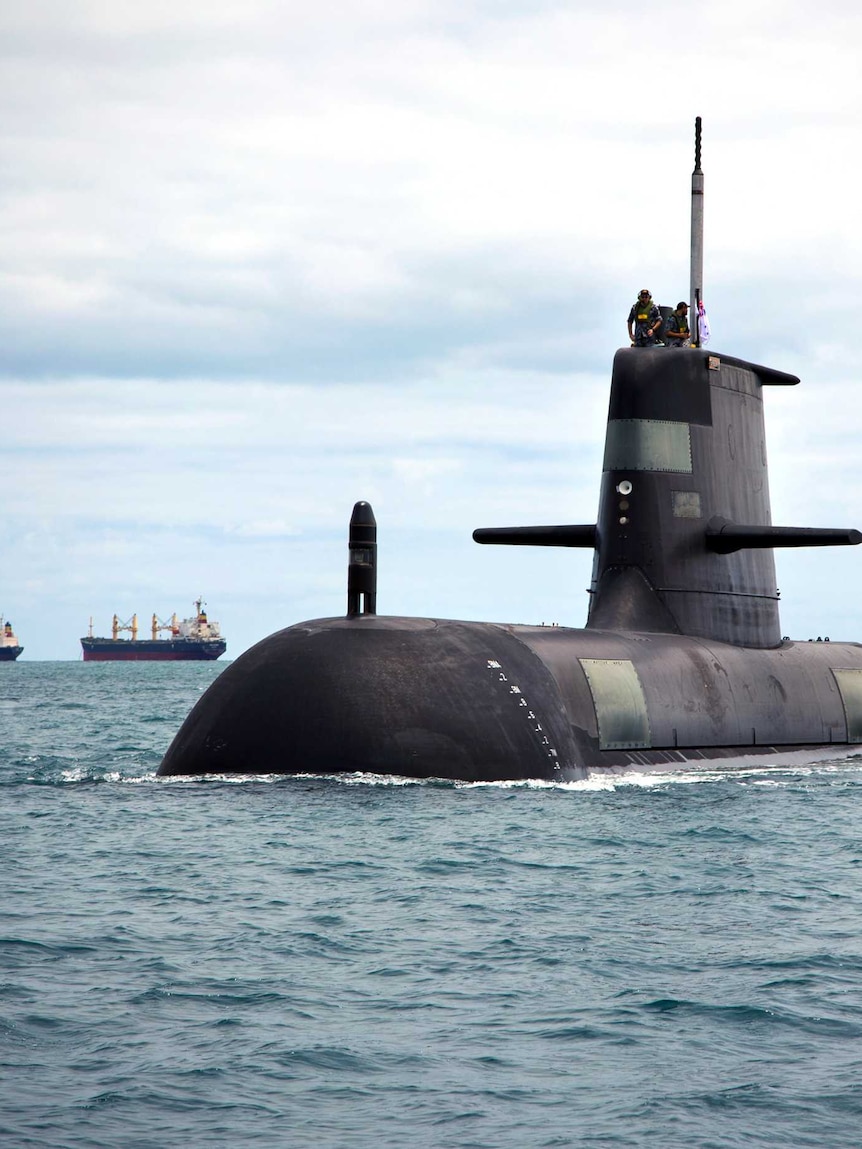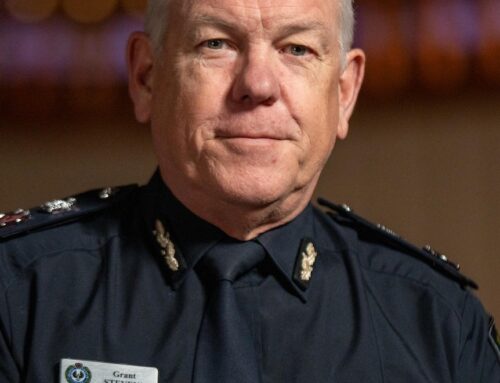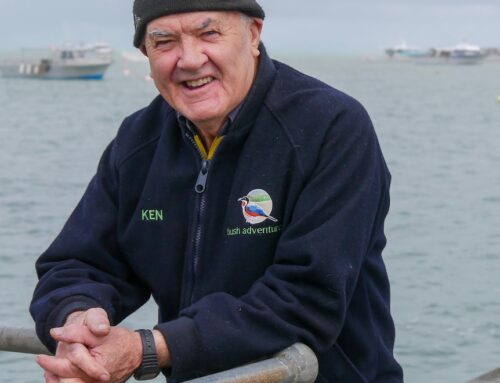We are on the brink of what’s been touted as one of the most significant decisions in South Australia’s recent history.
But it’s a call that will be made a long way from North Terrace and Rundle Mall.
Anthony Albanese will meet the leaders of the United Kingdom and the United States in San Diego, about 13,000 kilometres from Adelaide, for AUKUS discussions to finalise an agreement around the future of Australia’s submarine fleet.
South Australia’s shipbuilders are on tenterhooks, with that decision having major implications for an industry which is a large cog in the state’s economy.
So, what do you need to know ahead of that decision? And why is this so important for South Australia?
What is AUKUS?
In September 2021, Scott Morrison, Joe Biden and Boris Johnson combined to cause quite a shock — announcing a new defence partnership between Australia, the UK and the US.
A couple of the leaders have changed since then, but the core of the agreement remains the same — Australia will gain access to American and British nuclear secrets to get a new fleet of submarines in the water.
It was billed as crucial to strengthening Australia’s power in the Indo-Pacific at a time of rising tensions.
What’s happening now?
There were some challenges that remained after that 2021 deal.
At the top of the list was what would fill Australia’s naval “capability gap”.
Canberra has long wanted to replace its ageing fleet of Collins Class submarines, but building high-tech naval vessels is a long and expensive process.
Getting the new nuclear-powered submarine program up and running is not a quick exercise.
Mr Biden and Mr Albanese’s meeting with Rishi Sunak in Southern California should answer the question of what happens in the interim with Australia’s fleet.
Why does this matter for South Australia?
It’s simple really: jobs and defence.
The defence sector is absolutely vital for South Australia, employing around 15,000 people.
The industry makes up about 4 per cent of the SA economy, which is billions of dollars per year, and accounts for 6.4 per cent of the state’s exports.
At the heart of that industry is shipbuilding — Adelaide has long been at the centre of the Australian Navy’s construction and maintenance programs.
How will this decision change that?
The shipbuilding workforce needs something to do.
If Australia is buying boats from overseas, that initially may mean less work locally in a state which has already suffered its share of manufacturing blows.
But if the commonwealth locks in a decades-long shipbuilding program for South Australia, advocates say the economic benefits could be enormous.
That’s why SA’s shipbuilding workforce is waiting anxiously to find out what the future holds.
What do we know so far?
Well, not a lot.
There have been media leaks suggesting Australia will buy American Virginia-class submarines as a stopgap measure, before eventually constructing its own vessels — a modified version of a British design currently in development.
But the federal government is yet to confirm anything, beyond saying Australia will maintain “100 per cent sovereignty” over its future submarines.
In terms of what it means for South Australia, Foreign Minister Penny Wong said it would mean a “historical and extraordinary uplift” for the state’s industrial capability.
SA Premier Peter Malinauskas said he had “every confidence” the federal government would “honour its commitment” to build nuclear submarines at Osborne as soon as possible.
What has been promised?
Quite simply, that submarines stemming from the AUKUS pact would be built in South Australia at Osborne.
Those assurances were initially given by Mr Morrison and later by Mr Albanese.
As part of that, SA has been preparing to build eight nuclear-powered submarines.
Whether that will still happen is the key question.
Mr Malinauskas said he hopes the federal government commits to a continuous build into the future.
How did we get to this point?
SA’s submarine building heritage goes back decades, to the construction of the Collins Class at the Osborne shipyards.
It has not always been a straightforward relationship though, especially after then-defence minister David Johnston said of Adelaide’s ASC that he “would not trust them to build a canoe”.
Then the Abbott government came close to striking a deal with the Japanese to build off-the-shelf vessels constructed offshore.
The prospect of that decision prompted internal backlash within his party room and a change of policy.
A deal was then struck with French group DCNS to build 12 conventionally powered submarines in Adelaide, at a cost to taxpayers of $50 billion.
But that was torn up in favour of the AUKUS deal.
Since then, the SA defence industry has been waiting to discover the exact details of its future role in the shipbuilding program.
How many submarine programs could Australia have running at once?
There could be three.
There is the current Collins Class program with the existing submarines due for further Life-of-Type Extension work from 2026 at Osborne.
Full cycle docking maintenance will also be conducted at the yards.
Combined, the two programs will see up to $6.4 billion spent, supporting 1,300 South Australian jobs.
Next, there is the prospect of up to five US Virginia class vessels, which would be bought in the early 2030’s, according to international media reporting.
Finally, there will be the AUKUS boats, which, according to reports, will be the new British-designed submarines with US technology.




